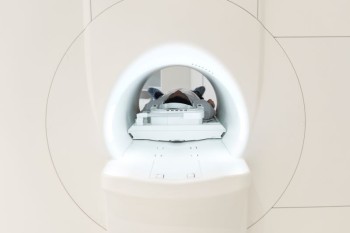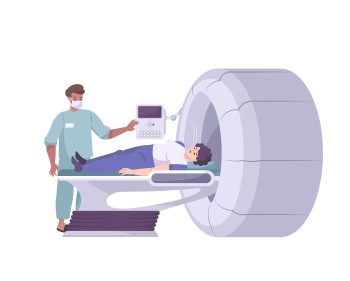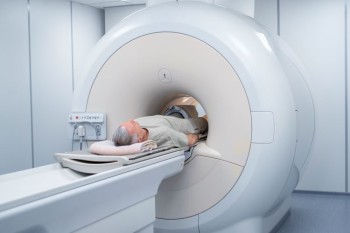
The Whole Body PET-CT Scan combines the strengths of PET and CT imaging, allowing healthcare professionals to assess both anatomical structures (CT) and metabolic activity (PET) in multiple areas of the body.
Whole Body PET-CT Scan in India with Cost
Whole Body PET-CT Scan
in Detail: Mapping Metabolism for Comprehensive Diagnostic Insight
In the realm of diagnostic imaging, the Whole Body PET-CT (Positron Emission Tomography-Computed Tomography) Scan stands as a powerful and comprehensive technique, offering a detailed look into the metabolic activity of various organs and tissues throughout the body. This guide aims to explore the significance, procedure, and invaluable insights provided by Whole Body PET-CT Scans, shedding light on its applications in diverse medical scenarios.
Introduction
The Whole Body PET-CT Scan combines the strengths of PET and CT imaging, allowing healthcare professionals to assess both anatomical structures (CT) and metabolic activity (PET) in multiple areas of the body. This integrated approach provides a holistic view of various physiological processes, aiding in the detection, staging, and monitoring of various diseases.
Understanding Whole Body
PET-CT Imaging
PET (Positron Emission Tomography):
PET involves the injection of a small amount of radioactive material (radiotracer) into the bloodstream. As the radiotracer travels to different organs, it emits positrons that collide with electrons in the body, producing gamma rays. The PET scanner detects these gamma rays, creating detailed images of metabolic activity within tissues.
CT (Computed Tomography):
CT uses X-ray technology to provide high-resolution anatomical images. In the context of Whole Body PET-CT, CT images are acquired simultaneously with PET images, allowing for precise localization of metabolic activity.
Importance in Diagnostic
Imaging
The Whole Body PET-CT Scan holds paramount importance in various medical disciplines:
Oncology: Assessing the extent of cancer,
monitoring treatment response, and detecting potential metastases.
Cardiology: Evaluating myocardial perfusion
and identifying areas of compromised blood flow.
Neurology: Detecting abnormalities in brain
metabolism associated with conditions like epilepsy and neurodegenerative
disorders.
Infectious Disease: Identifying
areas of increased metabolic activity indicative of infection or inflammation.
Preparation for the Scan
Preparation for a Whole Body PET-CT Scan may include:
Fasting: Patients are often instructed to
fast for several hours before the scan, especially for oncological evaluations.
Hydration: Adequate hydration is encouraged
to promote optimal radiotracer distribution.
Procedure: Mapping
Metabolic Activity
Radiotracer Injection: A radiotracer,
commonly Fluorine-18 FDG (Fludeoxyglucose), is injected into the patient's
bloodstream.
Uptake Period: The radiotracer circulates through
the body and is absorbed by tissues with increased metabolic activity.
Simultaneous Scanning: The PET and CT
scanners operate simultaneously, capturing both metabolic and anatomical images
during a single session.
Assessment Areas in
Whole Body PET-CT Imaging
Whole Body PET-CT Scans are employed to assess various aspects of health, including:
Oncological Imaging: Detecting and
staging various cancers based on abnormal metabolic activity.
Cardiac Evaluation: Assessing
myocardial perfusion and identifying areas of reduced blood flow.
Neurological Assessment: Visualizing
metabolic changes in the brain associated with neurological disorders.
Infectious Disease: Identifying
areas of increased metabolic activity indicative of infection.
Benefits of Whole Body
PET-CT Imaging
Holistic Assessment: Provides a comprehensive assessment of both
anatomical and metabolic aspects of the body.
Early Detection: Facilitates early detection of
abnormalities, contributing to timely interventions.
Treatment Response Monitoring: Assists in
monitoring the response to treatment, especially in cancer care.
Risks and Considerations
The risks associated with Whole Body PET-CT scans are minimal, primarily related to the injection of radiotracers. The benefits of comprehensive diagnostic insight generally outweigh the risks.
Clinical Applications
Whole Body PET-CT imaging finds applications in various clinical scenarios, including:
Cancer Care Centers: Staging and
monitoring cancer progression and treatment response.
Cardiology Clinics: Evaluating
myocardial perfusion and coronary artery disease.
Neurological Centers: Investigating
metabolic changes in the brain associated with neurological conditions.
Expert Perspectives
Radiologists, oncologists, cardiologists, and neurologists collaborate to interpret Whole Body PET-CT scans, providing expert insights into diverse medical conditions.
Technological Advancements
Continual advancements in imaging technology contribute to the refinement of Whole Body PET-CT scans, enhancing image resolution and diagnostic capabilities.
Patient Experience
While the procedure involves an intravenous injection and lying still during the scan, patients generally find the Whole Body PET-CT Scan to be well-tolerated. The benefits of comprehensive diagnostic information often outweigh any temporary inconvenience.
Conclusion
In conclusion, the Whole Body PET-CT Scan emerges as a versatile and powerful tool in diagnostic imaging, providing a panoramic view of metabolic activity across various organ systems. Its applications in oncology, cardiology, neurology, and infectious disease contribute to precise diagnosis and informed medical decision-making.
Frequently Asked Questions (FAQs) - Whole Body PET-CT Scan
1. What is the primary purpose of a Whole Body PET-CT Scan?
The primary purpose of a Whole Body PET-CT Scan is to provide a comprehensive assessment of both anatomical structures and metabolic activity throughout the entire body. This aids in the detection, staging, and monitoring of various medical conditions, including cancer, cardiac issues, neurological disorders, and infectious diseases.
2. How long does a Whole Body PET-CT Scan take?
The duration of a Whole Body PET-CT Scan varies but typically ranges from 30 to 60 minutes. This includes the time for the radiotracer injection, the uptake period, and the simultaneous scanning process.
3. Is there any preparation required before undergoing a Whole Body PET-CT Scan?
Yes, some preparation may be required. Patients are often instructed to fast for several hours before the scan, especially for oncological evaluations. Adequate hydration is also encouraged to promote optimal radiotracer distribution.
4. What are the risks associated with a Whole Body PET-CT Scan?
The potential risks of undergoing a Whole Body PET-CT Scan are minimal, primarily tied to the injection of radiotracers. Nevertheless, the advantages of obtaining a thorough diagnostic understanding typically surpass these minimal risks.
5. How often can a patient undergo a Whole Body PET-CT Scan?
The frequency of Whole Body PET-CT scans depends on the specific medical condition being monitored and the recommendations of the healthcare provider. Typically, they are not performed too frequently due to the exposure to a small amount of radiation.
6. Can a Whole Body PET-CT Scan detect all types of cancer?
While Whole Body PET-CT Scans are powerful tools for cancer detection, they may not detect certain types of slow-growing or small cancers. The effectiveness depends on factors such as the type and size of the tumor.
7. Are there any age restrictions for undergoing a Whole Body PET-CT Scan?
There are generally no specific age restrictions for undergoing a Whole Body PET-CT Scan. The decision is based on the patient's overall health and the necessity of the scan for diagnostic purposes.
8. How is the radiotracer chosen for a Whole Body PET-CT Scan?
The choice of radiotracer, such as Fluorine-18 FDG, depends on the specific information sought during the scan. Different radiotracers target different physiological processes, and the selection is made based on the medical condition being evaluated.
9. Can Whole Body PET-CT Scans be used for preventive health screenings?
Whole Body PET-CT Scans are generally not used for routine preventive health screenings. They are typically reserved for diagnostic purposes when there is a specific medical concern or symptom that needs further evaluation.
10. When can I expect results after a Whole Body PET-CT Scan?
Results from a Whole Body PET-CT Scan are typically available within a few days. The precise timeline may vary, but patients can anticipate receiving comprehensive findings shortly after the scan. Follow-up discussions with healthcare providers to discuss and interpret the results are recommended.
(0)
Login to continue



